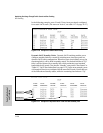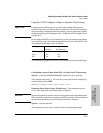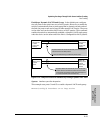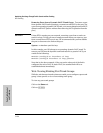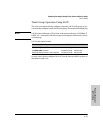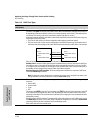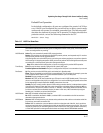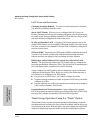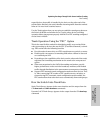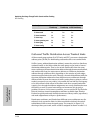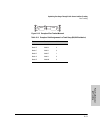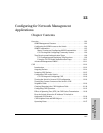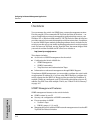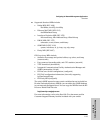
11-28
Optimizing Port Usage Through Traffic Control and Port Trunking
Port Trunking
Ports: Traffic Control
and Trunking
LACP Notes and Restrictions
Changing Trunking Methods. To convert a trunk from static to dynamic,
you must first eliminate the static trunk.
Static LACP Trunks. Where a port is configured for LACP (Active or
Passive), but does not belong to an existing trunk group, you can add that port
to a static trunk. Doing so disables dynamic LACP on that port, which means
you must manually configure both ends of the trunk.
VLANs and Dynamic LACP. A dynamic LACP trunk operates only in the
default VLAN unless you have enabled GVRP on the switch. If you want to use
LACP for a trunk on a non-default VLAN and GVRP is disabled, configure the
trunk as a static trunk.
STP and IGMP. If spanning tree (STP) and/or IGMP is enabled in the switch,
a dynamic LACP trunk operates only with the default settings for these
features and does not appear in the port listings for these features.
Half-Duplex and/or Different Port Speeds Not Allowed in LACP
Trunks. The ports on both sides of an LACP trunk must be configured for
the same speed and for full-duplex (FDx). The 802.3ad LACP standard speci-
fies a full-duplex (FDx) requirement for LACP trunking.
A port configured as LACP passive and not assigned to a port trunk can be
configured to half-duplex (HDx). However, in any of the following cases, a
port cannot be reconfigured to an HDx setting:
■ If a port is set to LACP Active, you cannot configure it to HDx.
■ If a port is already a member of a static or dynamic LACP trunk, you cannot
configure it to HDx.
■ If a port is already set to HDx, the switch does not allow you to configure
it for a static or dynamic LACP trunk.
Dynamic/Static LACP Interoperation: A port configured for dynamic
LACP can properly interoperate with a port configured for static (TrkX) LACP,
but any ports configured as standby LACP links will be ignored.
Trunk Group Operation Using the “Trunk” Option
This method creates a trunk group that operates independently of specific
trunking protocols and does not use a protocol exchange with the device on
the other end of the trunk. With this choice, the switch simply uses the SA/DA
method of distributing outbound traffic across the trunked ports without



